
Discovering the soil, which serves as the basis for the growth of tomato plants, is the first step in cultivating healthy tomato plants. The process of doing a soil analysis for healthy tomato plants is an essential step that guarantees your garden will give the optimal conditions for the production of abundant harvests. It is possible that tomatoes will struggle to develop if the soil is not properly prepared. Tomatoes are plants that require a lot of nutrients. Understanding how to conduct a soil analysis can be extremely beneficial, regardless of whether you are an experienced gardener or just beginning your gardening journey.
Through the process of fixing everything from pH levels to nutrient imbalances, you can transform your soil for vibrant tomato plants. This will ensure that your efforts result in crops that are successful.
Soil Analysis Essentials for Growing Perfect Tomatoes
Understanding the Importance of Soil pH Levels for Tomato Growth
It is vital for tomatoes to have soil that has a pH range of 6.0 to 6.8 in order to maximise the availability of nutrients. Tomatoes love soil that is somewhat acidic. For optimal tomato growth, soil pH and drainage are inextricably linked. This is due to the fact that inappropriate pH levels can cause nutrients to become trapped, resulting in deficiencies.
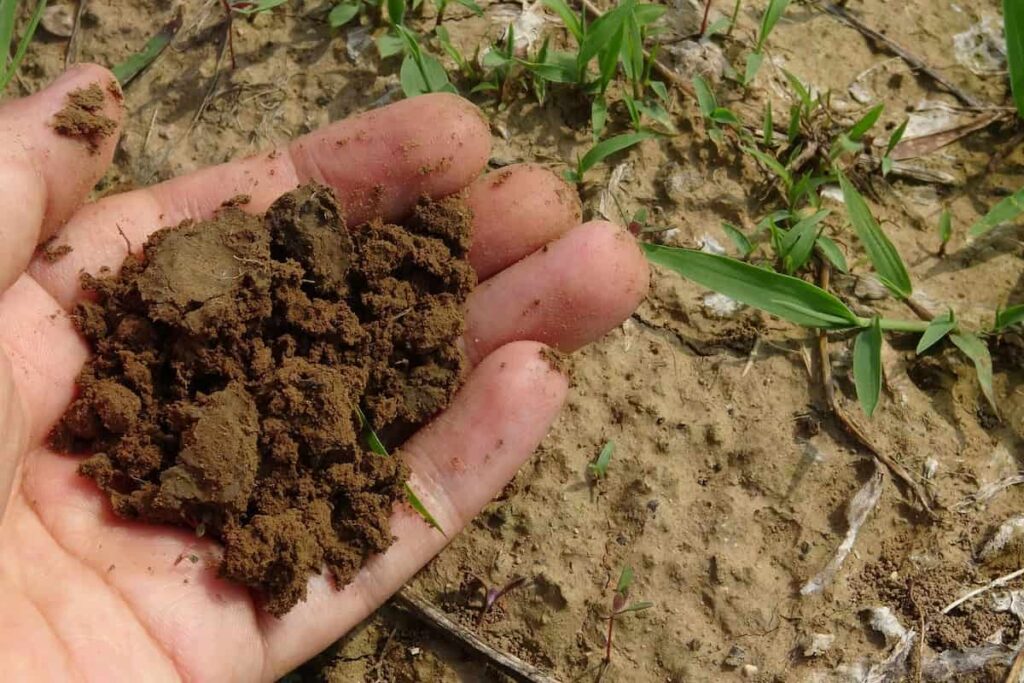
If you test your soil on a regular basis, you will be able to decipher your garden soil for better tomato crops. This will help you to determine whether lime or sulfur is required to achieve a state of equilibrium. An ideal soil environment for planting tomatoes is created by this fundamental step, which sets the stage for the environment.
| Aspect | Details |
|---|---|
| Preferred pH Range | 6.0 to 6.8. |
| Soil Type | Slightly acidic. |
| Impact of Incorrect pH | Nutrient lockout leading to deficiencies. |
| Testing Frequency | Regularly (e.g., before planting season). |
| Common Amendments | Lime (to raise pH), sulfur (to lower pH). |
| Benefits of Balanced pH | Optimal nutrient availability for robust tomato growth. |
| Drainage Connection | Proper pH enhances drainage, preventing waterlogged roots. |
How to Test Your Soil’s Nutrient Content for Optimal Tomato Health
You may verify that you are meeting specific nutritional requirements for tomatoes by tailoring soil tests to meet their needs. These requirements include nitrogen, phosphorus, and potassium. According to a breakdown of tomato soil requirements, these macronutrients are essential for the development of leafy structures, the production of flowers, and the quality of the fruit.
Additionally, the prevention of illnesses such as blossom end rot is significantly aided by the availability of minerals such as calcium. Creating a Soil Profile for Tomatoes that supports robust development throughout the season can be accomplished by doing an analysis of the soil in order to boost tomato growth on your own.
| Nutrient | Role in Tomato Growth |
|---|---|
| Nitrogen | Promotes leafy growth. |
| Phosphorus | Supports flowering and root development. |
| Potassium | Enhances fruit size and quality. |
| Calcium | Prevents blossom end rot and strengthens cell walls. |
| Micronutrients | Aids in overall plant health and disease resistance. |
| Testing Method | At-home kits or professional lab analysis. |
| Tailored Fertilization | Adjust fertilizers based on soil test results. |
The Role of Organic Matter in Enhancing Soil Structure for Tomatoes
When it comes to tomatoes, organic matter is important because it helps enhance soil porosity, which is essential for healthy tomato roots, while also improving water retention and aeration. Creating a balanced ecosystem is considerably aided by the use of organic amendments such as compost, well-rotted manure, and other organic amendments in the process of improving tomato soil quality.
In addition to assisting in the process of breaking up compacted soils, the utilization of gypsum for the purpose of improving soil structure makes it simpler for roots to penetrate deeper and gain access to nutrients.
| Amendment | Benefits |
|---|---|
| Compost | Improves soil structure and adds nutrients. |
| Well-Rotted Manure | Adds organic matter and improves fertility. |
| Gypsum | Breaks up clay soils and improves drainage. |
| Leaf Mold | Enhances water retention and microbial activity. |
| Mulch | Regulates soil temperature and moisture. |
| Organic Matter Overall | Boosts soil porosity, aeration, and nutrient availability. |
Identifying and Addressing Soil Compaction Issues for Tomato Roots
It is essential to take measures to manage soil compaction in order to prevent stunted tomato root development. This is because soils that are highly compacted restrict oxygen flow and hinder root expansion. The incorporation of organic matter not only reduces the risk of compaction but also improves tomato health by achieving a more balanced soil environment.
It is possible to Supercharge Your Soil for Tomato Growth by using raised beds or no-till methods. These methods provide a loose, friable texture that encourages the development of robust root systems.
| Compaction Cause | Impact on Tomato Plants |
|---|---|
| Heavy Foot Traffic | Reduces oxygen availability to roots. |
| Lack of Organic Matter | Leads to poor soil structure and compaction. |
| Mechanical Tillage | Can increase compaction over time. |
| Raised Beds | Prevents compaction and promotes loose soil. |
| No-Till Methods | Maintains soil structure and reduces erosion. |
| Organic Matter Addition | Loosens compacted soil. |
Why Soil Drainage Is Crucial for Preventing Tomato Plant Diseases
Composition of the Soil Affecting Disease-Free Tomato Cultivation must have adequate drainage to prevent problems such as root rot. Clay content has an effect on the amount of water that tomato plants are able to retain, which underscores the importance of adding amendments such as sand or perlite to very heavy soils.
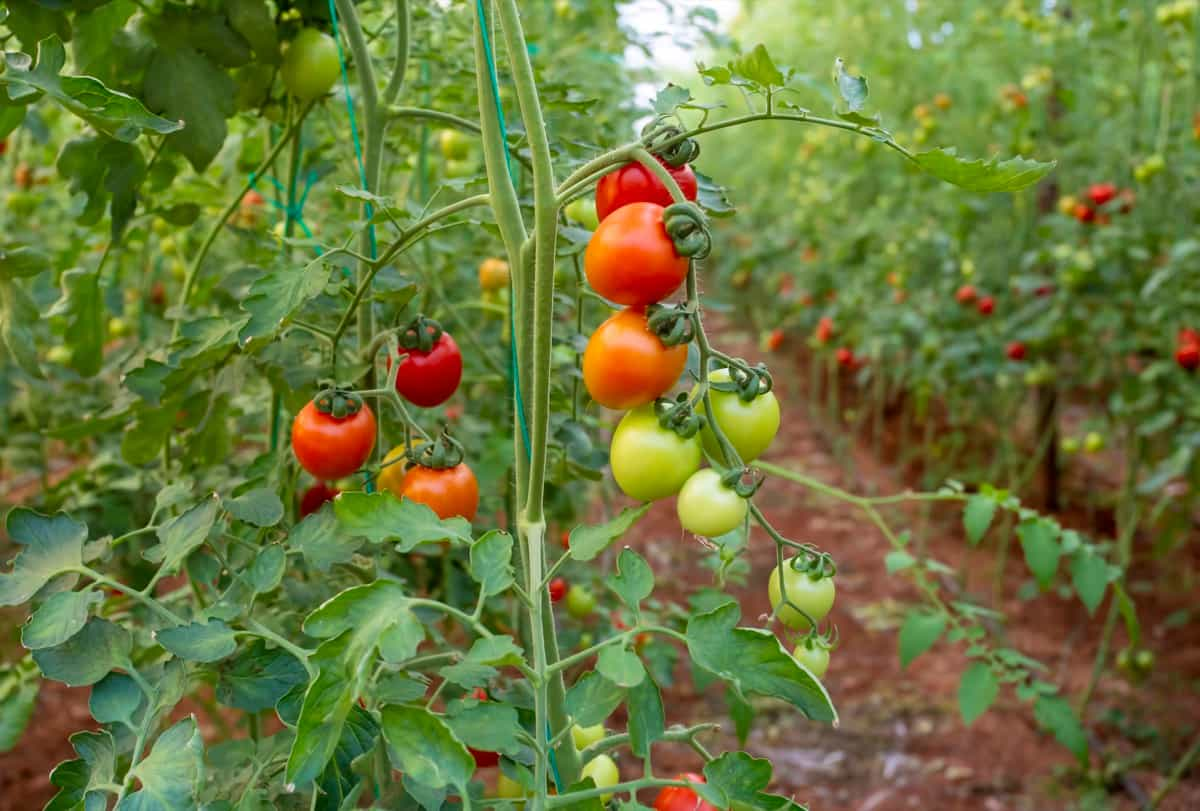
Evaluating the soil for tomato cultivation is an important part of effective tomato soil management. This evaluation is done to ensure that excessive moisture does not affect the health of the plant.
| Drainage Factor | Importance |
|---|---|
| Excess Water Retention | Increases risk of root rot and fungal diseases. |
| Sand/Perlite Additions | Improves drainage in heavy clay soils. |
| Raised Beds | Prevents waterlogging and promotes root health. |
| Soil Texture | Determines water retention and drainage capacity. |
| Root Rot Prevention | Ensures healthy root systems and prevents plant stress. |
| Regular Evaluation | Helps maintain consistent soil moisture levels. |
The Benefits of Mulching to Maintain Soil Moisture for Tomatoes
Mulching has a big impact on the amount of moisture that is retained in tomato soil because it helps to maintain a consistent temperature and ensures that the soil is evenly hydrated. Weeds are also suppressed by mulch, which reduces the amount of competition for resources.
As a result of Optimize Soil for Thriving Tomatoes, mulching transforms into a straightforward yet effective instrument for ensuring that growing conditions remain consistent.
| Mulching Material | Advantages |
|---|---|
| Straw | Retains moisture and suppresses weeds. |
| Wood Chips | Breaks down slowly, adding organic matter over time. |
| Plastic Mulch | Warms soil and prevents weed growth. |
| Leaf Litter | Improves soil fertility as it decomposes. |
| Temperature Regulation | Protects roots from extreme heat or cold. |
| Consistent Hydration | Prevents soil from drying out too quickly. |
Choosing the Right Fertilizer Based on Soil Analysis Results
It is crucial to have a thorough understanding of nitrogen cycling in tomato beds when selecting fertilizers. An excessive amount of nitrogen can result in an excessive amount of foliage, which can be detrimental to the development of fruit. It is impossible to overestimate the importance of potassium in tomato soil since it contributes to the growth and quality of the fruit.
In the event that soil testing reveal low levels of magnesium, it is recommended that tomato plants be treated with Epsom salts in order to prevent magnesium deficiency through targeted soil care.
| Fertilizer Component | Role |
|---|---|
| Nitrogen (N) | Promotes green growth; avoid excess to prevent leafy plants. |
| Phosphorus (P) | Encourages root and flower development. |
| Potassium (K) | Improves fruit quality and disease resistance. |
| Magnesium (Mg) | Essential for photosynthesis; prevents yellowing leaves. |
| Epsom Salts | Corrects magnesium deficiencies. |
| Balanced N-P-K Ratio | Ensures proportional nutrient supply for optimal growth. |
How Calcium-Rich Amendments Prevent Blossom End Rot in Tomatoes
Maintaining a healthy balance of calcium and magnesium in tomato soil helps to prevent frequent issues such as blossom end rot. Strong cell walls in developing fruits can be ensured by the addition of calcium-rich amendments such as crushed eggshells or lime.
As a result of doing soil analysis to boost tomato growth, calcium shortages are frequently discovered. These deficiencies can then be remedied prior to planting.
| Amendment | Preventive Role |
|---|---|
| Crushed Eggshells | Provides slow-release calcium. |
| Lime | Raises pH and supplies calcium. |
| Gypsum | Supplies calcium without altering pH. |
| Bone Meal | Adds phosphorus and calcium simultaneously. |
| Early Detection | Soil tests identify calcium deficiencies early. |
| Blossom End Rot Cause | Calcium deficiency. |
The Impact of Microbial Activity on Tomato Plant Nutrition
What Effect Does Microbial Activity Have on the Soil of Tomatoes? Beneficial microorganisms convert organic matter into nutrients that are accessible to plants, which results in a significant increase in fertility. Enhancing the structure of the soil and providing a habitat for microorganisms are two of the long-term advantages that may be gained from incorporating biochar into tomato soil.
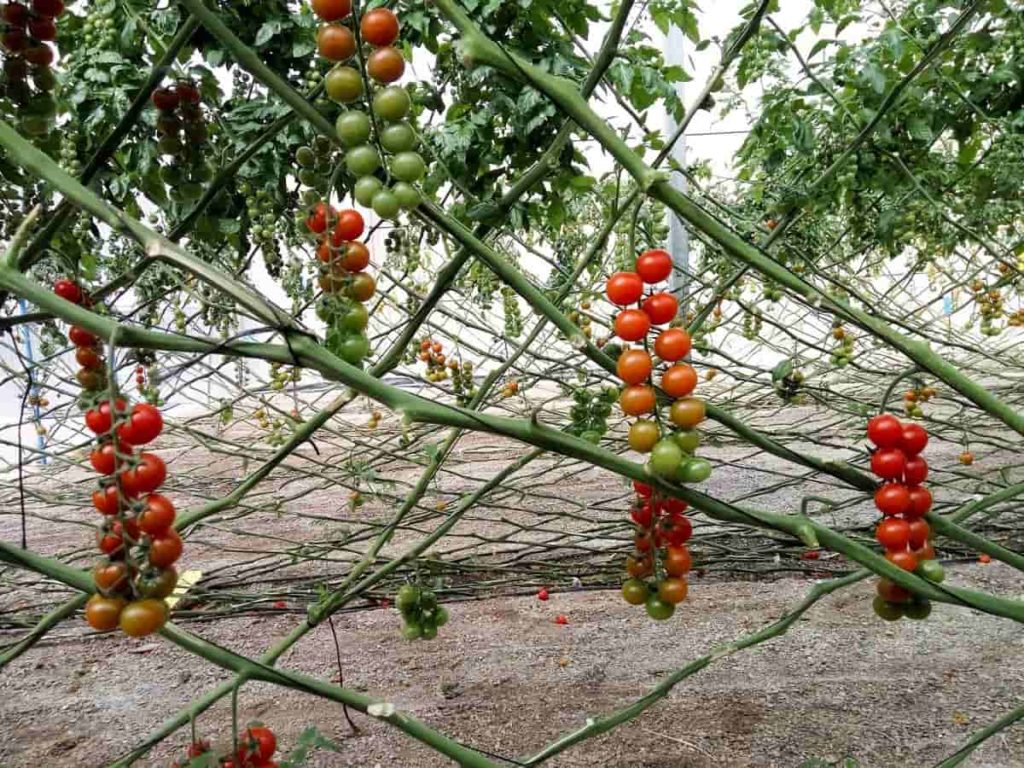
Through the process of Supercharge Your Soil for Tomato Growth, you are able to establish a living ecosystem that organically maintains the health of plants.
| Microbial Role | Impact on Tomato Soil |
|---|---|
| Decomposing Organic Matter | Releases nutrients like nitrogen and phosphorus. |
| Mycorrhizal Fungi | Extends root reach and improves nutrient uptake. |
| Biochar | Provides long-term habitat for microbes. |
| Disease Suppression | Competes with harmful pathogens. |
| Soil Fertility | Enhances overall nutrient availability. |
| Sustainable Ecosystem | Creates healthy soil environment. |
Detecting and Correcting Soil Iron Deficiency in Tomato Plants
The process of diagnosing iron chlorosis in tomatoes using soil analysis entails recognizing interveinal chlorosis, which is characterized by the yellowing of the leaves between the veins. It is possible that chelated forms of these micronutrients will be required in order to correct zinc deficiencies in tomato garden soil.
It is helpful to lower pH levels, which in turn makes iron more accessible to plants. Understanding the importance of sulphur in tomato soil helps maintain this.
| Deficiency Symptom | Solution |
|---|---|
| Interveinal Chlorosis | Indicates iron deficiency. |
| Chelated Iron | Provides readily available iron. |
| Sulfur Application | Lowers soil pH, making iron more soluble. |
| Zinc Deficiency | Requires chelated zinc supplements. |
| Soil Testing | Identifies micronutrient deficiencies. |
| Long-Term Care | Adds organic matter to sustain iron availability. |
Why Crop Rotation Improves Soil Health for Continuous Tomato Cultivation
The process of crop rotation helps improve the quality of the soil in tomato beds by reintroducing nutrients and preventing the accumulation of pests. The soil can be made more fertile for the cultivation of abundant tomatoes by alternating with nitrogen-fixing crops such as beans.
Tomatoes are deserving of the best soil, and this approach is in line with that attitude, which helps to ensure the success of a garden over the long term.
| Crop Rotation Benefit | Impact on Soil and Tomatoes |
|---|---|
| Pest Reduction | Breaks pest and disease cycles. |
| Nutrient Replenishment | Adds nitrogen back into the soil via legumes. |
| Soil Fertility | Prevents nutrient depletion over time. |
| Diversity in Planting | Reduces monoculture risks. |
| Long-Term Success | Ensures sustainable tomato cultivation. |
| Companion Crops | Beans and peas fix nitrogen naturally. |
How Cover Crops Contribute to Sustainable Tomato Gardening
In order to improve the quality of the soil for tomato beds, cover crops should be tilled beneath. This will prevent erosion and contribute organic matter to the soil. The nitrogen in the atmosphere is fixed by legumes in particular, which enriches the soil for the growth of abundant tomatoes.
Tomatoes are deserving of the best soil, and this approach is in line with that attitude, which helps to ensure the success of a garden over the long term.
| Cover Crop Types | Soil Improvement Role |
|---|---|
| Clover | Fixes atmospheric nitrogen. |
| Rye | Suppresses weeds and adds organic matter. |
| Buckwheat | Breaks down quickly, improving soil tilth. |
| Erosion Prevention | Protects topsoil during off-seasons. |
| Organic Matter Addition | Tilled cover crops add nutrients and improve structure. |
| Sustainability Focus | Builds long-term soil fertility. |
The Impact of Soil Temperature Data on Tomato Planting Times
Germination and early establishment are both affected by the relationship between the temperature of the soil and the growth rates of varieties of tomatoes. In order to reduce the risk of transplant shock, measuring the soil’s temperature helps identify the best planting window.
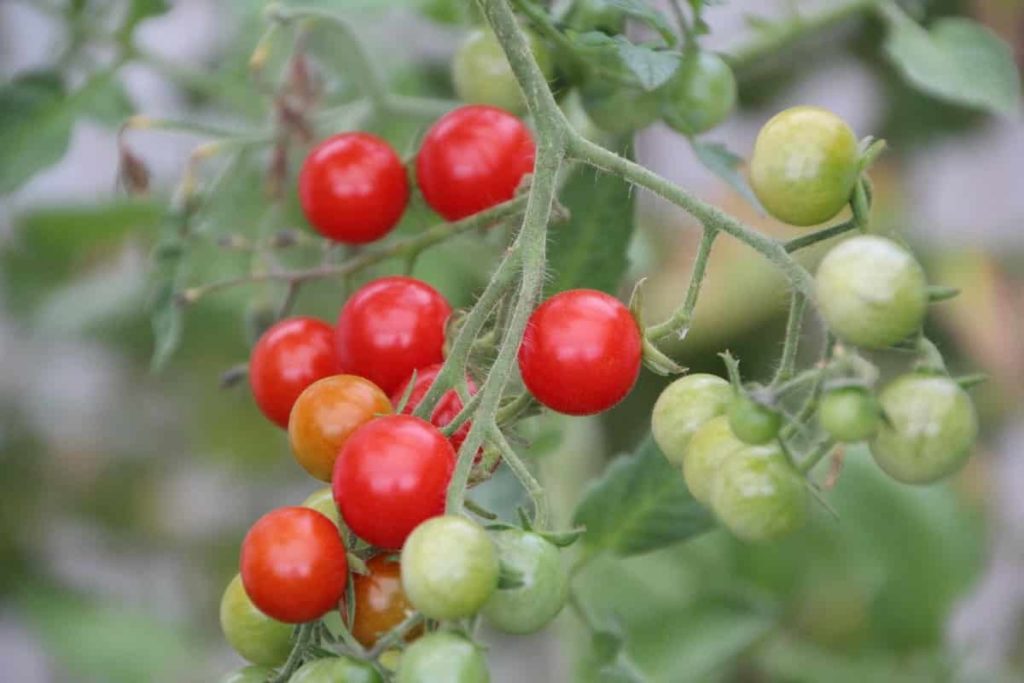
In order to achieve effective soil management for tomatoes, it is necessary to monitor temperatures in order to align them with the natural rhythms of the plant.
| Temperature Factor | Effect on Tomato Growth |
|---|---|
| Minimum Germination Temp | Below 55°F delays seed germination. |
| Ideal Planting Temp | Above 60°F promotes rapid root establishment. |
| Transplant Shock Risk | Cold soil increases shock; warm soil minimizes it. |
| Seasonal Planning | Use soil thermometers to plan planting dates. |
| Heat Stress Prevention | Avoid planting in overly hot soil. |
| Monitoring Tools | Soil thermometers or infrared sensors. |
Addressing Common Nutrient Deficiencies in Tomato Soil
Testing on a regular basis allows for the identification of common nutrient deficiencies in tomato soil, such as deficiencies in potassium or magnesium. The electrical conductivity (EC) of tomato soil should be measured and adjusted in order to monitor salt levels, which can have an effect on the uptake of nutrients.
When common soil problems for tomatoes are resolved, yields are guaranteed to be constant, and the plants are subjected to less stress.
| Deficiency Type | Signs and Solutions |
|---|---|
| Potassium Deficiency | Yellow edges on leaves; apply potassium-rich fertilizer. |
| Magnesium Deficiency | Interveinal chlorosis; use Epsom salts. |
| Salt Buildup (High EC) | Stunted growth; leach soil with fresh water. |
| Regular Testing | Identifies deficiencies before visible symptoms appear. |
| Targeted Amendments | Corrects specific nutrient shortfalls effectively. |
| Yield Stability | Ensures consistent fruit production and plant health. |
The Effects of Over-Fertilization on Tomato Soil Health
Over-fertilization can have a number of negative effects on tomato soil health, including the possibility for nutrient imbalances and the destruction of beneficial bacteria. The application of fertilizers must be done with caution and according to the findings of tests in order to improve tomato health through soil balance.
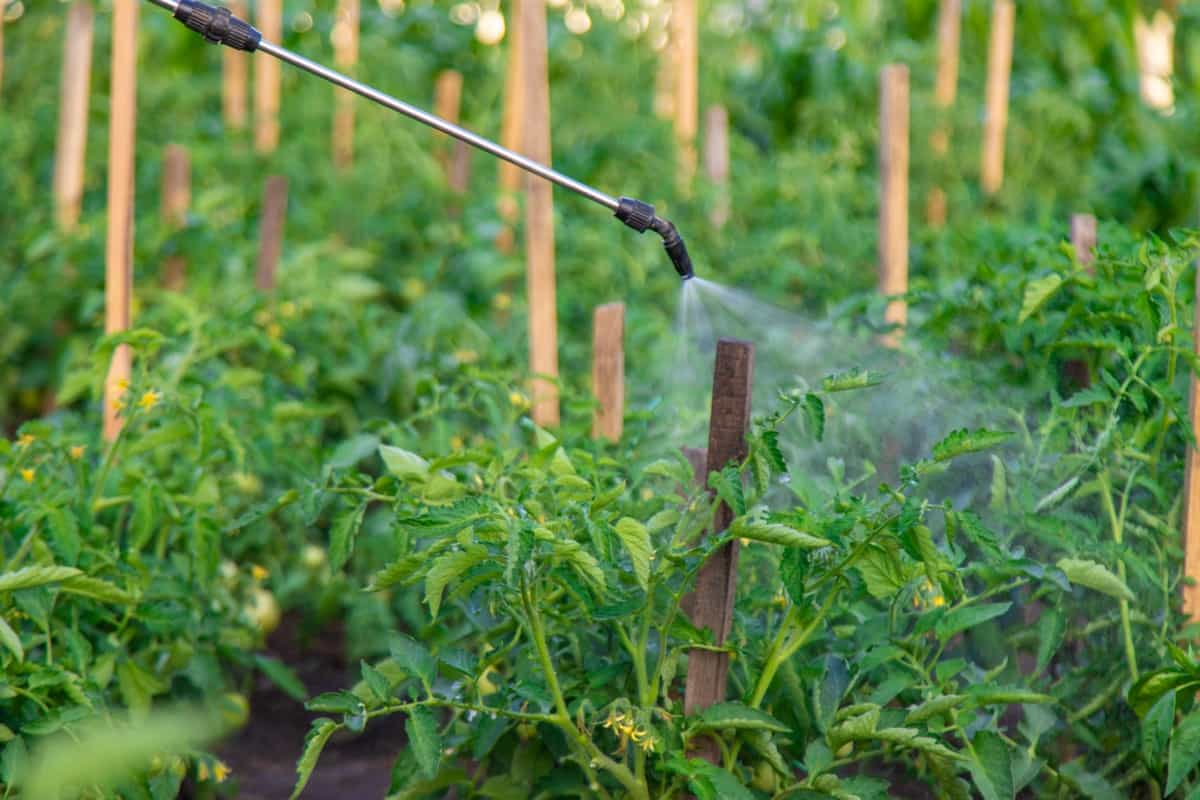
A more secure alternative that encourages the progressive release of nutrients is provided by organic amendments in the process of improving tomato soil quality.
| Over-Fertilization Impact | Consequences and Remedies |
|---|---|
| Nutrient Burn | Brown leaf tips; dilute fertilizer concentration. |
| Beneficial Microbes Killed | Disrupts soil ecosystem; restore with organic matter. |
| Imbalanced Ratios | Too much nitrogen leads to poor fruit set. |
| Organic Alternatives | Use compost or manure for slow nutrient release. |
| Soil Testing Before Fertilizing | Prevents over-application. |
| Long-Term Soil Health | Maintains balanced, fertile soil. |
Conclusion
The key to obtaining success with tomato plants is to have the soil thoroughly prepared and maintained. Every stage in the process of analyzing the soil for healthy tomato plants helps to vigorous growth and bountiful harvests. This includes ensuring that the calcium levels in the soil are appropriately balanced in order to prevent tomato diseases and applying organic amendments in order to improve the quality of the tomato soil.




